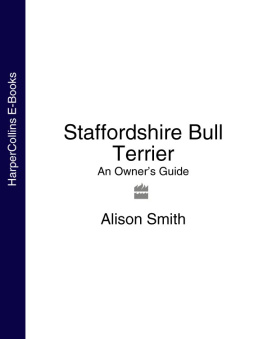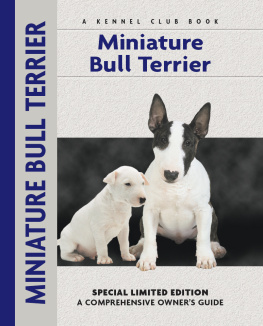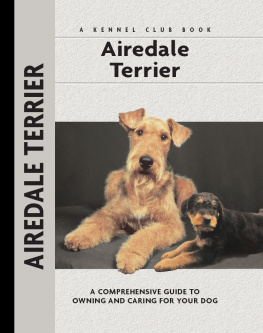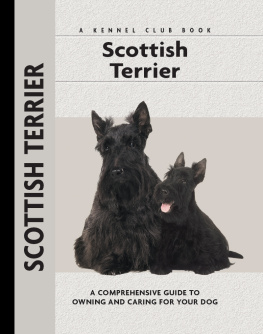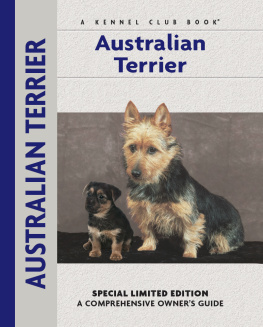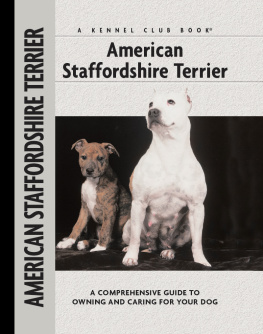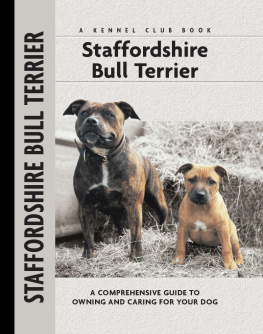
A PRACTICAL GUIDE FOR OWNERS AND BREEDERS
STAFFORDSHIRE
BULL TERRIERS
JAMES BEAUFOY

THE CROWOOD PRESS
First published in 2016 by
The Crowood Press Ltd
Ramsbury, Marlborough
Wiltshire SN8 2HR
www.crowood.com
This e-book first published in 2015
James Beaufoy 2016
All rights reserved. No part of this publication may be reproduced or transmitted in any form or by any means, electronic or mechanical, including photocopy, recording, or any information storage and retrieval system, without permission in writing from the publishers.
British Library Cataloguing-in-Publication Data
A catalogue record for this book is available from the British Library.
ISBN 978 1 78500 097 3
Note
Throughout this book, where both sexes are implied, no gender bias is intended by the use of the pronoun he. This is used rather than the impersonal pronoun it.
Disclaimer
The author and publisher do not accept any responsibility in any manner whatsoever for any error or omission, or any loss, damage, injury, adverse outcome, or liability of any kind incurred as a result of the use of any of the information contained in this book, or reliance upon it. The information contained herein is the authors opinion and is based on his experience. If in doubt about any aspect of veterinary treatment, readers are advised to seek professional advice.
CONTENTS
PREFACE
This book is devoted entirely to the world of the Staffordshire Bull Terrier, and is intended to examine the breed and explore what it is that makes Staffords so unique. From a humble and often violently cruel background, Staffords have long since emerged to become one of the most desirable and sought-after of all breeds around the world. Their superb temperament and proven devotion and loyalty to family, children and the elderly are universally acknowledged attributes that do much for their recognition as a truly credible choice for both family pet and show dog.
My introduction to the Staffordshire Bull Terrier came way back in 1963 when, as a complete newcomer to the breed, I obtained my first two Staffords as pets. Now, over fifty years later, I and my family are surrounded by our many Staffords, some of which are pets and some show dogs. I often reflect on just how little I knew about the breed in those early days. There was so much I had to learn and many pitfalls to overcome before I could speak with any authority in response to the many questions asked by people seeking to increase their knowledge about this most fascinating breed.
My progress through the years has been an allabsorbing non-stop adventure, during which I have always sought to learn all I can about the Staffordshire Bull Terrier. I have judged the breed at Championship Show level many times, including at Crufts, and in numerous countries. Over the years my family has devotedly bred many sound and healthy litters of Stafford puppies, and our stud dogs have sired many Champions of the breed, some of which were famous throughout the world. I am honoured to have spent some thirty years as the Club Secretary of the Staffordshire Bull Terrier Club, the Parent and first Breed Club formed on the very day of Kennel Club recognition of the Stafford as a pedigree dog in 1935.
This book is intended as a guide, and I hope it will provide readers with sound information to assist in establishing a clear understanding of what the Staffordshire Bull Terrier represents: a truly splendid dog!

James Beaufoy
1 THE HISTORY OF THE BREED
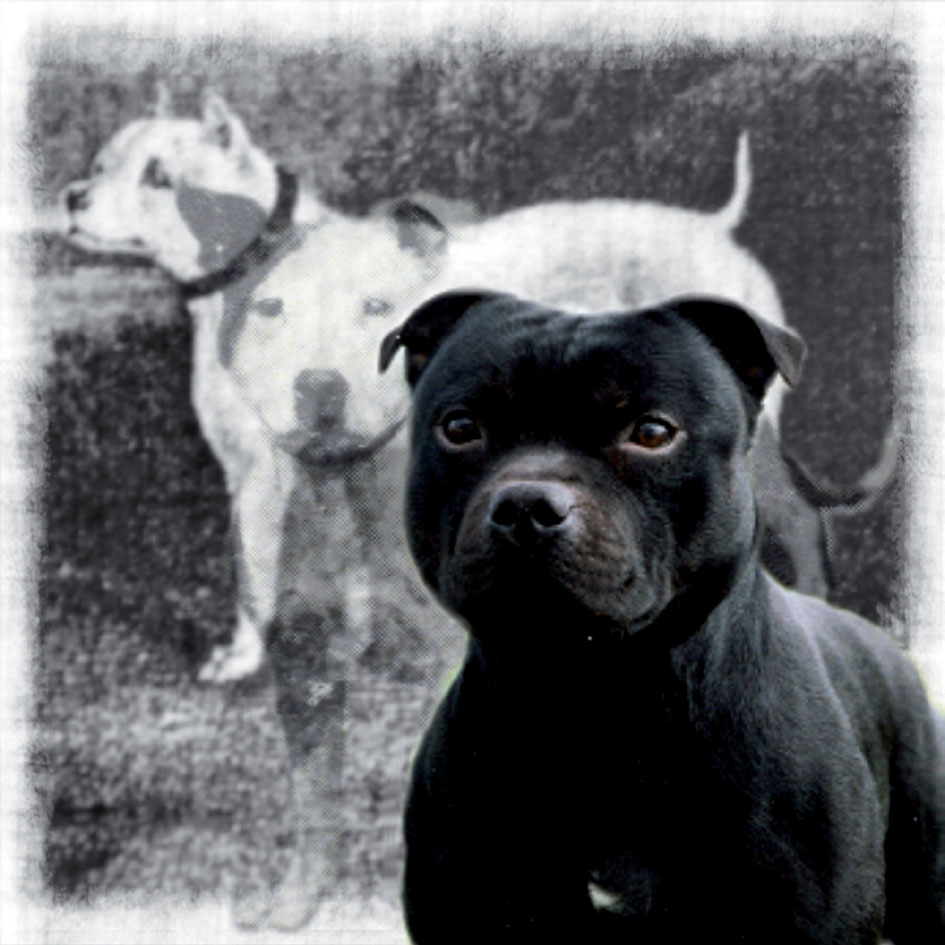
Progression from the beginnings to the dogs of today.
Wyrefare Staffords
DOGS OF THE ANCIENT BRITONS
Attacks upon the advancing Roman legions by savage packs of huge and ferocious dogs, set on them by the ancient battling tribes defending the British Isles, would certainly have made a considerable impression on the Romans. Where had these dogs come from? And who could possibly have predicted their influence on many future breeds of dog in the world today? One such breed of dog, with a fascinating and indeed often immensely cruel history, is the magnificent Staffordshire Bull Terrier.
For many years before the Romans invaded Ancient Britain the boats of the Phoenicians had come to the shores of these islands for the purposes of trade. With them they brought huge dogs of tremendous strength and courage. These dogs were welcomed by the Ancient Britons, who adopted them and trained them to fight. They were descendants of the ancient Molossus, a huge formidable dog from Greece dating back several thousand years and likely to be the ancestor of our modern-day Mastiff breeds. Trained by the ancient Britons and used to attack the Roman armies, they were described in AD 8 by Gratius Faliscus as the Pugnaces of Britain and by the poet Claudius as the broad-mouthed dogs of Britain. Many were shipped back to Rome to be pitted against many different opponents in the gladiatorial arenas, to satisfy the so-called sporting urges of the people of Rome. History records that they were highly successful in their gladiatorial roles. These early Mastiff-type dogs rapidly spread throughout large areas of Europe and were highly influential in the formation of a number of breeds.
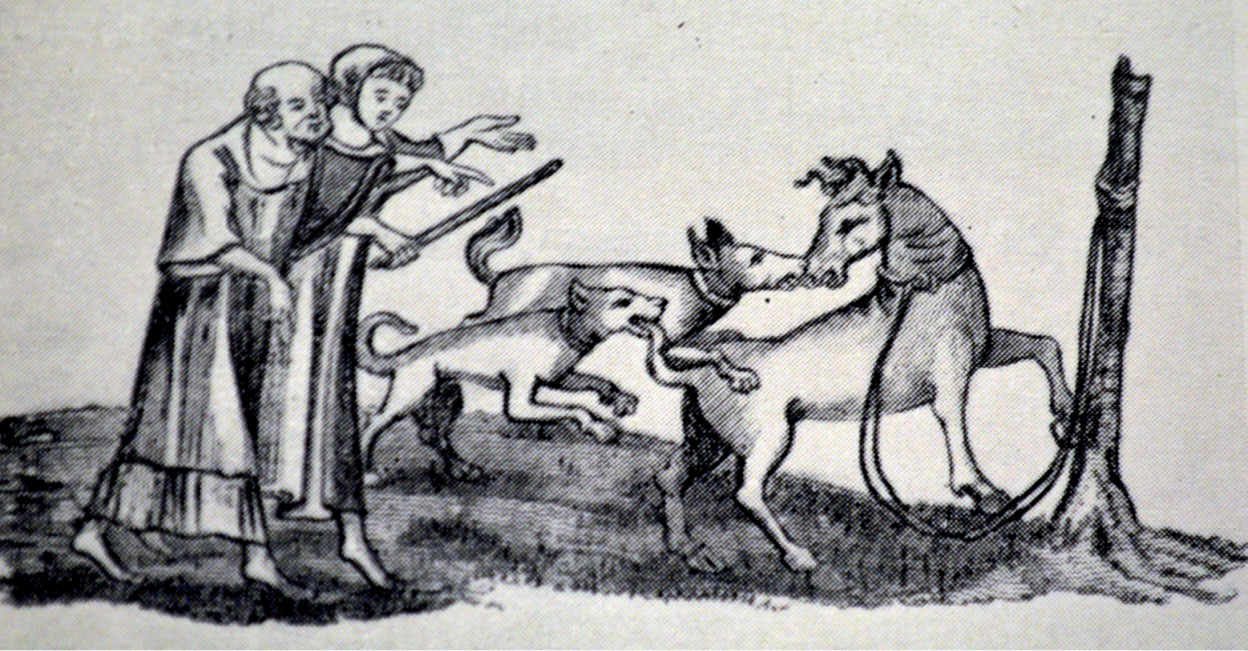
A fourteenth-century painting depicting dogs set upon a tethered beast.
After the departure of the Romans from the shores of Britain in the fifth century, the Pugnaces remained for many centuries without marked variation. Among the population they had become well established and domesticated dogs. It is very likely that they were the ancestors of the Bulldog (not the modern Bulldog, but the fighting Bulldog of the Middle Ages). Shortly after the Norman conquest of Britain records indicate the use of the early Mastiffs for bull-, bear- and lion-baiting, which were fast-growing sporting activities.
Around the year 1400 a courageous and fearfully strong dog of extreme courage appears in the records. Developed from the early Mastiffs, they were known as Alaunts. Of great size, strength and courage, these were large, heavy-headed dogs of brachycephalic conformation. They are mentioned in Chaucers Knights Tale as accompanying the King of Thrace, and they are almost certainly the large hunting dogs depicted in the Bayeux Tapestry. Renowned for their skills in hunting large game, these dogs were also used as guard dogs and were later developed for bull-baiting. Edward, Second Duke of York (140613), described the type in his The Master of Game as a short-headed dog aggressive by nature and able to take hold and often despatch his victim. From the Alaunt were developed various types of Bulldog, and thus the Alaunt is a vital link in the eventual appearance of the Staffordshire Bull Terrier.
The sports of bull- and bear-baiting commenced as early as the twelfth century and possibly even a little earlier. Certainly from the time of King Henry II (115489) baiting was patronized by royalty and had become a popular and well organized spectacle greatly enjoyed by the population. By the end of the thirteenth century market towns all over Britain had their bullrings to accommodate the spectacles. In the Midlands towns such as Birmingham, Wednesbury, Sedgley, Cosely, Walsall and Bilston all had their bull-rings, as did Hockley-in-the-Hole near Clerkenwell.


